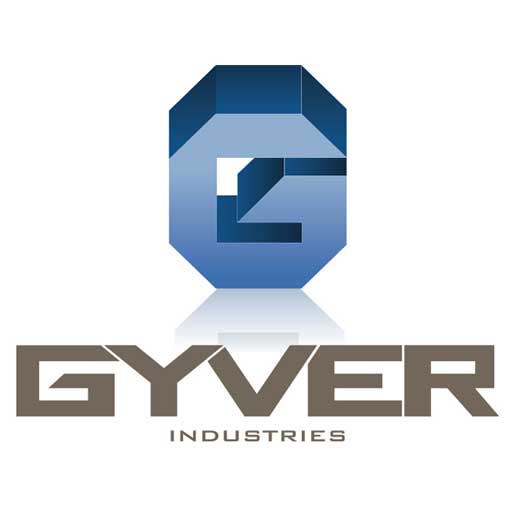Gyver Industries, Inc. (Gyver) would like to take this opportunity to introduce ourselves to you and your company as a resource in the area of treating and monitoring industrial wastewater generated during plating and metal finishing processes.
Gyver Industries has the following resources, experience, and capabilities to assist with any wastewater issues your facility may have:
- Gyver’s fabrication shop is able to work on small or large projects in; PVC, CPVC, mild steel, stainless steel, or super duplex materials.
- Gyver’s welders are qualified to weld steel, stainless steel, super duplex materials.
- Gyver has an AutoCAD department capable of providing complete design services for system or equipment layouts, piping schematics, electrical schematics, and Process & Instrumentation Diagrams (P&IDs).
- Gyver’s employees have extensive knowledge in various parameter monitoring and data logging equipment.
- Gyver has designed and built wastewater treatment systems on portable skids for use at various locations.
- Gyver has designed and built wastewater treatment systems onsite as a permanent installation to meet facility and code requirements.
- Gyver has designed and written programs for various programmable logic controllers (PLC), programmable automation controllers (PAC), and human machine interface (HMI) systems to automate the control, operation, alarm system, and data logging. Gyver control systems are designed for ease of operation, local operators are trained in the proper use of the system and to be able to generate reports for regulatory compliance submittals. Gyver Industries is certified as a 508A UL electrical panel building shop.
- Gyver is able to design, procure, install, commision, and provide training for wastewater pretreatment systems that are very simple to extremely complicated to meet the needs of a facilty and their discharge permit requirments.
- Gyver works closely with our suppliers in a effort to maintain budgetary costs at a resonable rate.
- Gyver engineers have prepared permit applications for: air emissions, industrial wastewater discharge permit to local POTW, hazardous waste generation, and NPDES permits.
Gyver’s engineers have worked on industrial wastewater pretreatment systems for the following types of facilities:
- Plating shops
- Wire manufacturer
- Circuit board assembly facility
- Acid mine drainage
- Groundwater remediation
- Micro-brewery wastewater
- Wastewaters generated in Micro-biological laboratories
- Electronic component manufacturing
- Designed and built a facility to treat produced water from oil and gas field operations
Industrial wastewater pretreatment sysytems in plating shops that Gyver has been involved with, have required the pretreatment and removal of various heavy metals identified in the following list:
-
Aluminum
-
Arsenic
-
Cadmium
-
Chromium
-
Copper
-
Iron
-
Lead
-
Nickel
-
Silver
-
Zinc
Gyver has extensive experienced in chemical precipitation, coagulant addition, oxidation reduction, and flocculation, as well as all types of filtration including but not limited to:
-
Aeration with phase separation
-
Sandfilters
-
Screens and strainers
-
Bag or cartridge filtration
-
Walnut shell filters (free oil removal)
-
Gravity clarifiers
-
Ceramic microfiltration
-
Polymeric microfiltration
-
Nano-Filtration, Ultra-Filtration
-
Reverse osmosis (RO) Filtration
Gyver Industries’ engineers have participated in numerous industrial wastewater treatment pilot tests that have also included the following processes in addition to the processes listed above:
-
Ozone Oxidation
-
Electrical/Electro Coagulation
Gyver’s engineers are willing to discuss in detail the pros and cons of any of the wastewater pretreatment process and equipment listed above or that may be being used within your facility, based on our experience in working with these.
The application of specific processes at a facility can result in a program that recovers a majority of the wastewaters for reuse or sustainability, miniminizing the actual amount of wastewater discharged by a facility.

